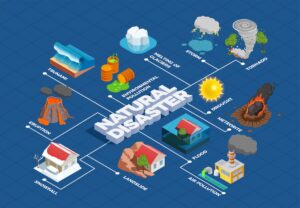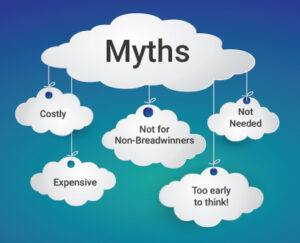Machine learning (ML) is one of the most transformative technologies of our time, reshaping industries and our everyday lives. From recommendations on streaming platforms to self-driving cars, machine learning powers many of the tools and services we interact with daily. But what exactly is machine learning, how does it work, and why is it so important?
In this article, we will break down the concept of machine learning in simple terms, explore how it works, and look at its various applications and types.
At its core, machine learning is a subset of artificial intelligence (AI) that enables computers to learn from data and improve over time without being explicitly programmed. Instead of being given specific instructions, a machine learning model is trained using large amounts of data. The more data the model processes, the better it gets at making predictions or decisions based on that data.
Machine learning is about creating systems that can analyze data, identify patterns, and make decisions with minimal human intervention. These systems can improve themselves as they are exposed to more information, which allows them to solve complex problems or perform tasks that are difficult to program manually.
Machine learning works through a process called “training.” During training, a machine learning algorithm is provided with data (often referred to as “training data”) and learns to identify patterns or make predictions based on that data.
Here’s a basic breakdown of how machine learning works:
- Collecting Data: The first step is to gather data that the machine learning model can learn from. This data could come in various forms—numbers, text, images, or even sound. The quality and quantity of data are crucial to building an effective machine learning model.
- Preprocessing Data: Before the model can learn, the data must be cleaned and prepared. This involves removing any errors, filling in missing values, and transforming the data into a format the algorithm can understand.
- Choosing a Model: There are various types of machine learning models (discussed below), each suited for different tasks. The right model is selected based on the specific problem being solved.
- Training the Model: The model is trained using the data, which means it “learns” from the examples. For instance, if you’re training a model to recognize pictures of cats and dogs, you’ll feed it thousands of labeled images (i.e., images of cats and dogs with their labels). The model learns to recognize patterns like shapes, textures, and features that differentiate cats from dogs.
- Evaluating the Model: After training, the model is tested on new, unseen data (test data). This allows us to evaluate how well the model has learned and how accurately it can make predictions or classify new data.
- Improvement: If the model’s predictions or classifications are not accurate enough, adjustments can be made to the model or the data, and the process is repeated to improve its performance.
There are three main types of machine learning, each with different methods for how a model learns from data:
- Supervised Learning
- In supervised learning, the model is trained on a labeled dataset, where the correct answers (labels) are provided. The model learns to map input data to the correct output.
- Example: A spam email classifier. The algorithm is trained with a dataset of emails that are labeled as “spam” or “not spam.” The model learns the patterns that distinguish spam from non-spam emails.
- Applications: Image classification, speech recognition, email filtering, fraud detection.
- Unsupervised Learning
- In unsupervised learning, the model is provided with data that has no labels. Instead, the algorithm tries to find hidden patterns or groupings within the data.
- Example: A clustering algorithm might take customer data and group customers into different segments based on purchasing behavior, without knowing in advance which customers belong to which group.
- Applications: Market basket analysis, customer segmentation, anomaly detection, recommender systems.
- Reinforcement Learning
- Reinforcement learning (RL) is a type of machine learning where an agent learns by interacting with an environment and receiving feedback in the form of rewards or penalties. The goal is for the agent to maximize its cumulative reward over time by learning the best actions to take.
- Example: A robot learning to navigate a maze. The robot receives positive rewards for getting closer to the goal and negative rewards for hitting walls. Over time, it learns the most efficient path.
- Applications: Robotics, gaming (e.g., AlphaGo), autonomous vehicles, recommendation systems.
- Features: Features are individual pieces of information or attributes used by the machine learning model to make predictions. For example, in a dataset of houses, features might include the number of rooms, square footage, and location.
- Model: A machine learning model is the mathematical framework or algorithm that is trained to learn from data. Different algorithms, such as decision trees, support vector machines, and neural networks, are used to create models depending on the type of learning task.
- Training and Testing Data: Training data is used to train the model, while testing data is used to evaluate its performance. Ideally, the testing data is from a different source than the training data to ensure that the model generalizes well to new, unseen data.
- Overfitting and Underfitting:
- Overfitting occurs when a model is too complex and learns the noise or random fluctuations in the training data rather than the actual patterns. This results in poor performance on new data.
- Underfitting occurs when the model is too simple and fails to capture the underlying patterns in the data, leading to poor performance on both training and test data.
Machine learning has vast applications in nearly every industry. Some of the most notable uses include:
- Healthcare: ML is used in medical image analysis, predicting disease outcomes, and personalizing treatment plans. For example, ML algorithms can help detect early signs of diseases like cancer by analyzing medical images.
- Finance: ML algorithms are used for fraud detection, algorithmic trading, credit scoring, and risk management. Financial institutions use machine learning to analyze large volumes of transactions to identify unusual patterns indicative of fraud.
- E-commerce: Personalized recommendations are one of the most common applications of machine learning. E-commerce platforms like Amazon and Netflix use ML to recommend products, movies, or shows based on user preferences and behavior.
- Autonomous Vehicles: Self-driving cars rely heavily on machine learning to interpret sensor data, recognize objects, and make real-time decisions about navigation and safety.
- Natural Language Processing (NLP): ML plays a crucial role in NLP, which involves processing and understanding human language. Applications include chatbots, translation services, voice assistants, and sentiment analysis.
Machine learning is advancing at a rapid pace, and its future holds exciting possibilities. From improving automation in various industries to enabling more personalized experiences, machine learning will continue to drive innovation. Some of the future trends include:
- Explainable AI: As ML models become more complex, there is a growing demand for transparency. Explainable AI aims to make machine learning decisions more understandable and interpretable, which is especially important in critical areas like healthcare and finance.
- Transfer Learning: Transfer learning allows a model trained on one task to be adapted for another task with less data. This approach is expected to reduce the need for vast amounts of labeled data and accelerate the development of machine learning models.
- AI and Ethics: As machine learning becomes more integrated into society, addressing ethical issues such as bias in algorithms, privacy concerns, and accountability will be crucial.
Machine learning is revolutionizing the way we interact with technology, and its potential seems limitless. By enabling systems to learn from data, machine learning allows computers to perform tasks that were once thought to require human intelligence. As we continue to explore and expand the boundaries of machine learning, it will undoubtedly play an even larger role in shaping our future, from healthcare to entertainment and beyond.
Understanding the basics of machine learning is the first step toward appreciating its impact and its potential to transform our world. Whether you’re a beginner or an aspiring data scientist, grasping the fundamental concepts of machine learning is key to staying ahead in this exciting field.





